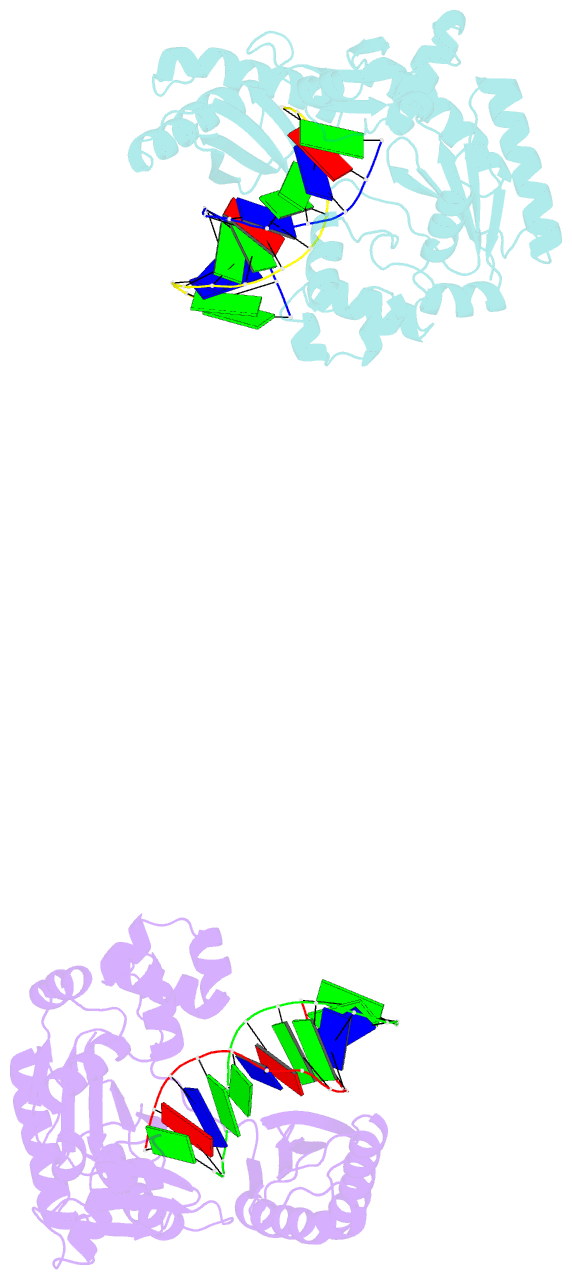Summary information and primary citation
- PDB-id
- 2asj; SNAP-derived features in text and JSON formats;
DNAproDB
- Class
- transferase-DNA
- Method
- X-ray (2.35 Å)
- Summary
- Oxog-modified preinsertion binary complex
- Reference
- Rechkoblit O, Malinina L, Cheng Y, Kuryavyi V, Broyde S, Geacintov NE, Patel DJ (2006): "Stepwise Translocation of Dpo4 Polymerase during Error-Free Bypass of an oxoG Lesion." Plos Biol., 4, 1-18. doi: 10.1371/journal.pbio.0040011.
- Abstract
- 7,8-dihydro-8-oxoguanine (oxoG), the predominant lesion formed following oxidative damage of DNA by reactive oxygen species, is processed differently by replicative and bypass polymerases. Our kinetic primer extension studies demonstrate that the bypass polymerase Dpo4 preferentially inserts C opposite oxoG, and also preferentially extends from the oxoG*C base pair, thus achieving error-free bypass of this lesion. We have determined the crystal structures of preinsertion binary, insertion ternary, and postinsertion binary complexes of oxoG-modified template-primer DNA and Dpo4. These structures provide insights into the translocation mechanics of the bypass polymerase during a complete cycle of nucleotide incorporation. Specifically, during noncovalent dCTP insertion opposite oxoG (or G), the little-finger domain-DNA phosphate contacts translocate by one nucleotide step, while the thumb domain-DNA phosphate contacts remain fixed. By contrast, during the nucleotidyl transfer reaction that covalently incorporates C opposite oxoG, the thumb-domain-phosphate contacts are translocated by one nucleotide step, while the little-finger contacts with phosphate groups remain fixed. These stepwise conformational transitions accompanying nucleoside triphosphate binding and covalent nucleobase incorporation during a full replication cycle of Dpo4-catalyzed bypass of the oxoG lesion are distinct from the translocation events in replicative polymerases.





